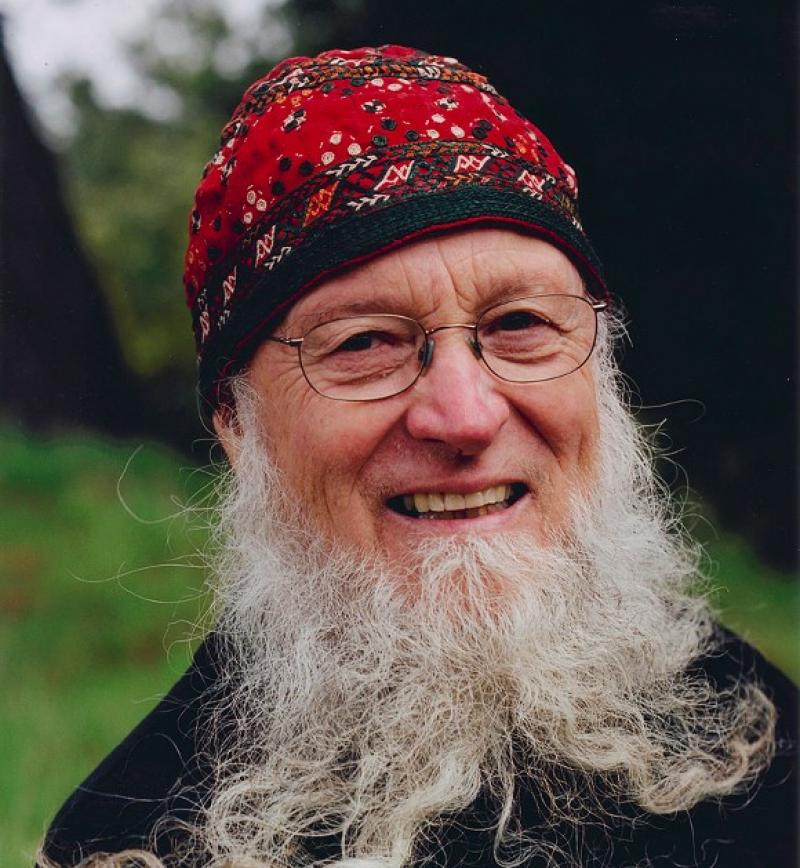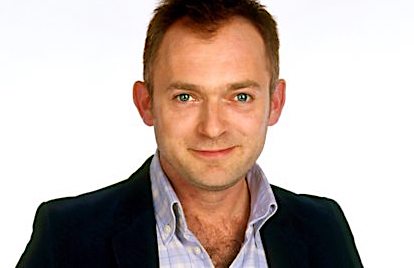Tones, Drones and Arpeggios: The Magic of Minimalism, BBC Four - brilliant appraisal | reviews, news & interviews
Tones, Drones and Arpeggios: The Magic of Minimalism, BBC Four - brilliant appraisal
Tones, Drones and Arpeggios: The Magic of Minimalism, BBC Four - brilliant appraisal
Overdue survey of a subversive musical idea gone defiantly mainstream

By most measures, minimalism is the most successful movement in 20th-century music, certainly orchestral music.
So widespread now is the influence of minimalism, with many a MOR-ish piano ensemble aspiring to an inoffensively contemporary wash of sound using minimalist techniques in watered-down form, it’s difficult to believe how small it once was, yet how revolutionary most of its techniques. In Tones, Drones and Arpeggios: The Magic of Minimalism (BBC Four) Charles Hazlewood illustrates both with great clarity, with first the wild conceptual visions of La Monte Young and his unfinishable piece The Well-Tuned Piano, to the brilliant but more customisable synth pioneers at the San Francisco Tape Music Centre, whose inventions went on to influence vast areas of contemporary music, from Mike Oldfield to Kraftwerk.
Minimalism undermines the three-part melodic structure of the Western tradition. It dispenses with the concept of time moving towards a conclusion, replacing it with intense repetition and highly focused attention to rhythmic and harmonic detail. The mesmeric use of long drone notes came, in the principal foreign influence on an otherwise Californian invention, from the Indian classical tradition. Terry Riley still practises his ragas (microtonal scales) daily, we learned. All of this was illustrated rather brilliantly.
 The broader cultural context was also well sketched, with useful coverage of Young’s involvement in the Fluxus movement, and its awareness of audience interaction as part of a performance. Although the most influential individual minimalists, Steve Reich and Philip Glass, made their names in New York, Young argued that the concept, particularly its sense of endless time, was quintessentially a Californian one.
The broader cultural context was also well sketched, with useful coverage of Young’s involvement in the Fluxus movement, and its awareness of audience interaction as part of a performance. Although the most influential individual minimalists, Steve Reich and Philip Glass, made their names in New York, Young argued that the concept, particularly its sense of endless time, was quintessentially a Californian one.
Tape technology, then the cutting edge, of course, was crucial to several techniques of minimalism, specifically the incorporation of distortion, which increases with each repetition of a loop, and phasing, whereby two identical samples played on adjacent tape machines will gradually begin to play out of sync. The studio demonstrations of both, with the help of Portishead’s Adrian Utley, were superb.
Occasionally the contextual pondering got out of hand, though entertainingly so. Jarvis Cocker suggested that the “sawing violas” in the Velvet Underground were inspired by the experiences of John Cale and Angus MacLise, who played with La Monte Young in the '60s. This is entirely reasonable. But the notion that this in turn prepared audiences to accept minimalism as mainstream music perhaps joins some distant dots over-enthusiastically.
Hazlewood (pictured above) described minimalism as the “last big idea in classical music”. What comes next (death? The eternal hegemony of Delius season on Classic FM?) he didn’t say. Young and Riley were acclaimed as Californian pioneers, prophets without honour, and visionaries who pre-scored the road ahead with a sense of fun that is gradually taking over the traditional world of classical music. Minimalists and what’s left of the serialists of the European avant-garde have a tense and generally disrespectful relationship, exemplified by Philip Glass’s description of some serialists as creeps and maniacs. There will be more of this next week.
Charles Hazlewood is a classical conductor by training, but has been a broadcaster for over a decade, and has impeccable credentials as a breaker of musical boundaries, and a supporter of minimalism. He’s even taken Steve Reich to Glastonbury, giving the first headline orchestral performance at the festival. There was an excellent sequence of concise exposition about Riley’s revolutionary piece In C, described by Hazlewood as the “big bang of minimalism”, and “democracy in action”. Around a central pulse, it gives performers an autonomy to unparalleled in any earlier scored piece.
Here, perhaps, was an opportunity for Hazlewood to reach out beyond the intimate community of professional musicians who occupied the rest of the programme, and give us a sense of how minimalism has changed the wider music scene, beyond the pontifications of Jarvis Cocker. If there’s a caveat, both of the music and this programme, it’s that, though widespread geographically, minimalism has mostly remained a white, male, middle-class music, unlike the jazz and rock that emerged from San Francisco in the '50s and '60s.
Otherwise, within the well-established arts-doc formula, this was a model of brisk, cogent, and incisive comment. La Monte Young, whose influence is both broad and deep, has never been broadcast on the BBC before, so his footage alone made the programme worthwhile, even for those already familiar with the central ideas of the music. A mainstream appraisal of the revolution he and Riley began has long been overdue.
rating
Explore topics
Share this article
The future of Arts Journalism
You can stop theartsdesk.com closing!
We urgently need financing to survive. Our fundraising drive has thus far raised £49,000 but we need to reach £100,000 or we will be forced to close. Please contribute here: https://gofund.me/c3f6033d
And if you can forward this information to anyone who might assist, we’d be grateful.

Subscribe to theartsdesk.com
Thank you for continuing to read our work on theartsdesk.com. For unlimited access to every article in its entirety, including our archive of more than 15,000 pieces, we're asking for £5 per month or £40 per year. We feel it's a very good deal, and hope you do too.
To take a subscription now simply click here.
And if you're looking for that extra gift for a friend or family member, why not treat them to a theartsdesk.com gift subscription?
more TV
 Murder Before Evensong, Acorn TV review - death comes to the picturesque village of Champton
The Rev Richard Coles's sleuthing cleric hits the screen
Murder Before Evensong, Acorn TV review - death comes to the picturesque village of Champton
The Rev Richard Coles's sleuthing cleric hits the screen
 Black Rabbit, Netflix review - grime and punishment in New York City
Jude Law and Jason Bateman tread the thin line between love and hate
Black Rabbit, Netflix review - grime and punishment in New York City
Jude Law and Jason Bateman tread the thin line between love and hate
 The Hack, ITV review - plodding anatomy of twin UK scandals
Jack Thorne's skill can't disguise the bagginess of his double-headed material
The Hack, ITV review - plodding anatomy of twin UK scandals
Jack Thorne's skill can't disguise the bagginess of his double-headed material
 Slow Horses, Series 5, Apple TV+ review - terror, trauma and impeccable comic timing
Jackson Lamb's band of MI5 misfits continues to fascinate and amuse
Slow Horses, Series 5, Apple TV+ review - terror, trauma and impeccable comic timing
Jackson Lamb's band of MI5 misfits continues to fascinate and amuse
 Coldwater, ITV1 review - horror and black comedy in the Highlands
Superb cast lights up David Ireland's cunning thriller
Coldwater, ITV1 review - horror and black comedy in the Highlands
Superb cast lights up David Ireland's cunning thriller
 Blu-ray: The Sweeney - Series One
Influential and entertaining 1970s police drama, handsomely restored
Blu-ray: The Sweeney - Series One
Influential and entertaining 1970s police drama, handsomely restored
 I Fought the Law, ITVX review - how an 800-year-old law was challenged and changed
Sheridan Smith's raw performance dominates ITV's new docudrama about injustice
I Fought the Law, ITVX review - how an 800-year-old law was challenged and changed
Sheridan Smith's raw performance dominates ITV's new docudrama about injustice
 The Paper, Sky Max review - a spinoff of the US Office worth waiting 20 years for
Perfectly judged recycling of the original's key elements, with a star turn at its heart
The Paper, Sky Max review - a spinoff of the US Office worth waiting 20 years for
Perfectly judged recycling of the original's key elements, with a star turn at its heart
 The Guest, BBC One review - be careful what you wish for
A terrific Eve Myles stars in addictive Welsh mystery
The Guest, BBC One review - be careful what you wish for
A terrific Eve Myles stars in addictive Welsh mystery
 theartsdesk Q&A: Suranne Jones on 'Hostage', power pants and politics
The star and producer talks about taking on the role of Prime Minister, wearing high heels and living in the public eye
theartsdesk Q&A: Suranne Jones on 'Hostage', power pants and politics
The star and producer talks about taking on the role of Prime Minister, wearing high heels and living in the public eye
 King & Conqueror, BBC One review - not many kicks in 1066
Turgid medieval drama leaves viewers in the dark
King & Conqueror, BBC One review - not many kicks in 1066
Turgid medieval drama leaves viewers in the dark
 Hostage, Netflix review - entente not-too-cordiale
Suranne Jones and Julie Delpy cross swords in confused political drama
Hostage, Netflix review - entente not-too-cordiale
Suranne Jones and Julie Delpy cross swords in confused political drama

Add comment